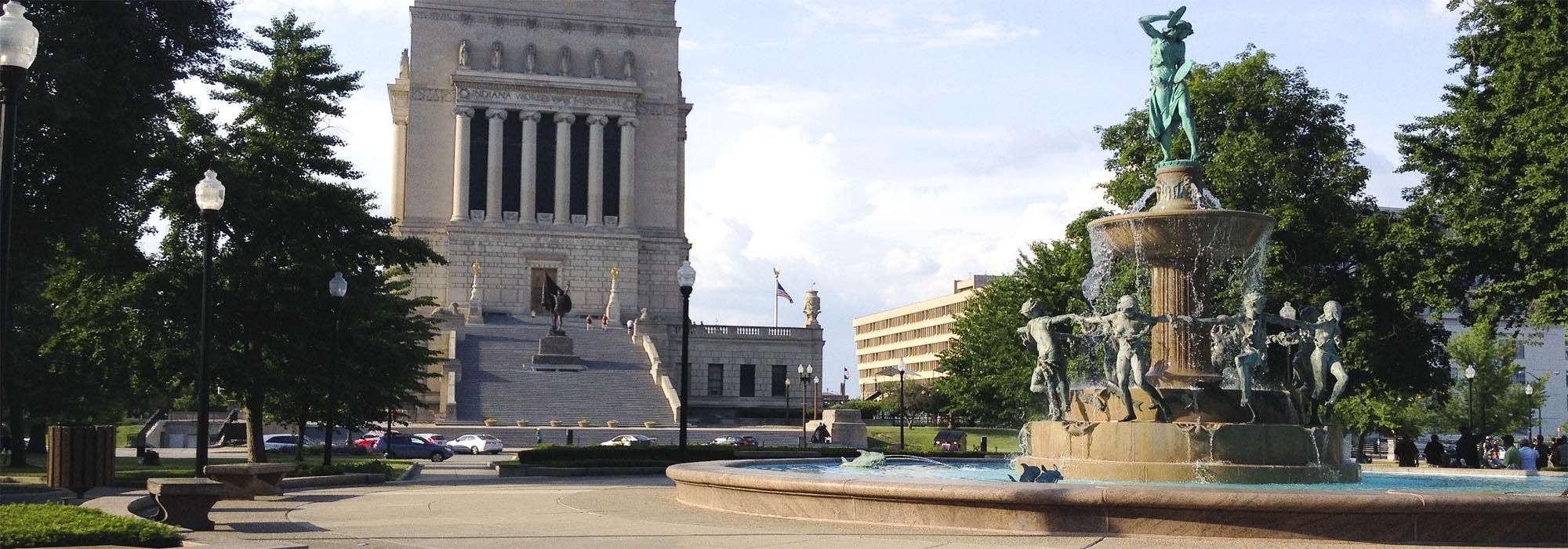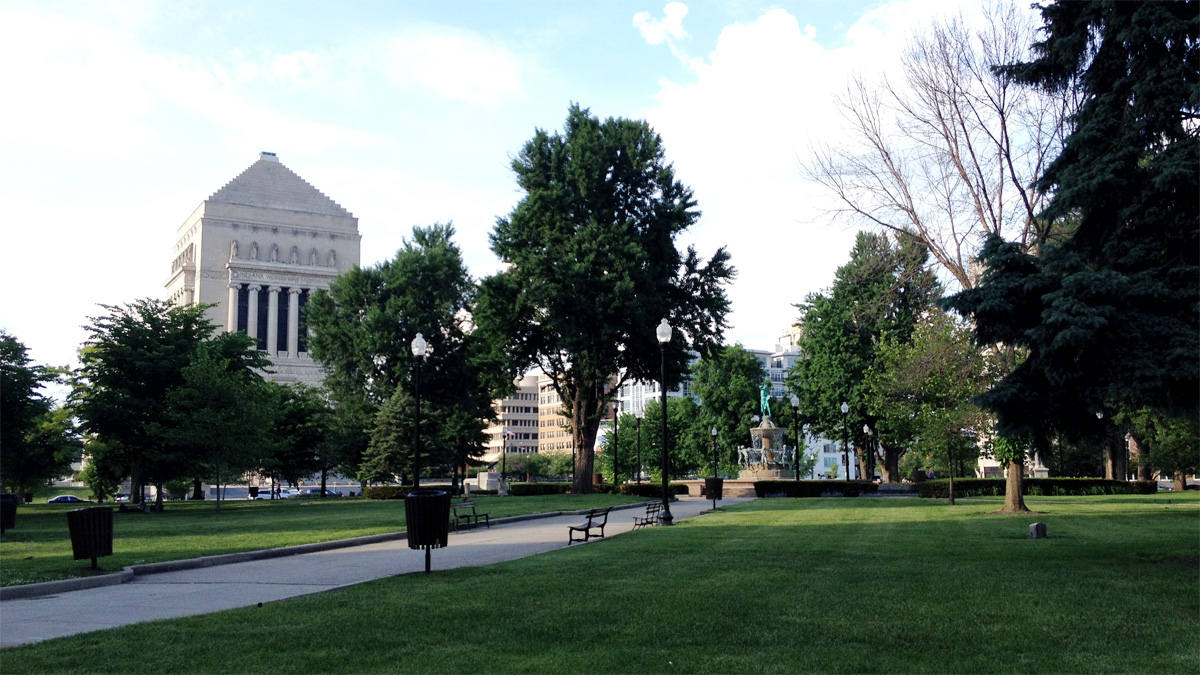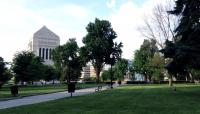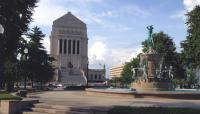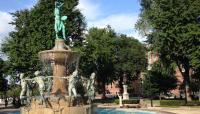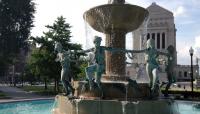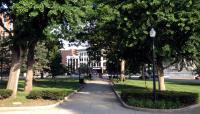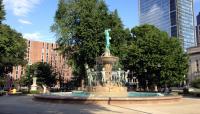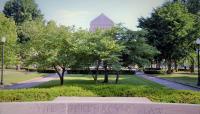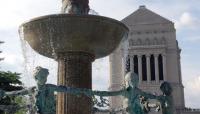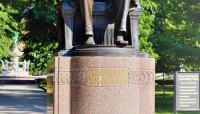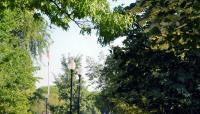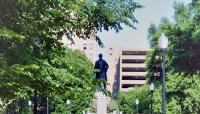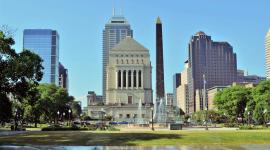Landscape Information
Located within the original Mile Square of Alexander Ralston’s city plan for Indianapolis, this one-block radius park comprises the southern end of the five-block long Indiana War Memorial Plaza. The land was originally set aside in 1821 as the site of a future state university. Although that plan was never developed, the site served a variety of uses in first half of the nineteenth century, including housing a seminary, multiple churches, and the city's first high school. Union troops also used the land for drilling practice during the Civil War. In 1866 the City of Indianapolis developed the land as a public park featuring a design of curvilinear, radiating sidewalks.
It was during the 1920s that University Park assumed its present appearance. The prominent landscape architect George Kessler, principal planner of the Indianapolis Park and Boulevard System, designed a new plan for the park with diagonal and north/south axial walks radiating from a central raised plaza and fountain. At present, the park closely resembles the original Kessler design, with retention of its major walk alignments, central fountain, plant massing, street tree plantings, seating bays, and the Benjamin Harrison Memorial at its southern central edge. Sculptures feature prominently in the park, including the five-leveled Depew Fountain, located in the central circle and flanked by Pan and Syrinx the wood nymph, and statues dedicated to Schuyler Colfax and Abraham Lincoln in the east center and southeast portions of the park, respectively. The park was included in the Indiana World War Memorial Plaza Historic District when it was listed in the National Register of Historic Places in 1989, and designated a National Historic Landmark in 1994.



